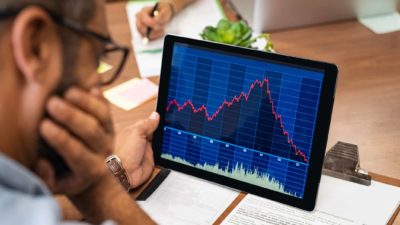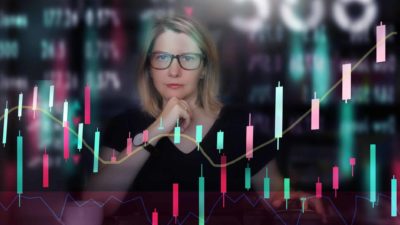The ASX plunged into the red yesterday, recording its biggest one-day fall since 1987. The S&P/ASX 200 Index (ASX: XJO) fell 9.7%, losing some $160 billion as investors panicked at the economic impacts of the spread of coronavirus.
News that the United States Federal Reserve had slashed interest rates to zero and that the RBA had signalled an emergency out-of-cycle rate cut fuelled the fear, with expectations of a recession imminent.
Carnage across the board
The major banks were major losers yesterday with Australia and New Zealand Banking Group (ASX: ANZ) falling 12.5%, National Australia Bank Ltd. (ASX: NAB) losing 12.44%, Westpac Banking Corp (ASX: WBC) dropping 11.81% and Commonwealth Bank of Australia (ASX: CBA) down over 10%. They were part of a larger group of interest-rate exposed ASX shares which will come under pressure from rate cuts.
But the carnage wasn't just reserved for financials – travel and entertainment shares were also in the firing line as governments introduced tighter travel restrictions and prohibitions on large gatherings. Star Entertainment Group Ltd (ASX: SGR) lost 23.57% and Crown Resorts Ltd (ASX: CWN) was down 11.22%. Among the already battered travel shares, Flight Centre Travel Group Ltd (ASX: FLT) fell 15.82%, Webjet Limited (ASX: WEB) was down 22.02%, and Qantas Airways Limited (ASX: QAN) fell another 5.03%.
Uncertainty rules
Yesterday's carnage means the market has now lost $529 billion since its all time high just 3 weeks ago on 20 February. While governments are rapidly actioning stimulus measures to try to head off a financial crisis, it seems the market is far from confident. The uncertainty surrounding the pandemic appears far from over. With so much unknown, we can expect volatility to persist in the near future.
But what about the long term?
Ultimately, however, the crisis will pass, allowing a return to normal levels of economic activity. If history is any guide, we can expect the ASX to recover lost ground as this occurs.
In the 1987 crash, the ASX lost 25% of its value in a day and over 40% of its value by the end of October 1987. But in the year following the crash, the market regained 22.5%. Ten years after the crash, the market was up over 90%, as demonstrated in the graph below.

Over the course of the GFC, the ASX fell nearly 50%. But in the first year of recovery, it bounced back 41%. In the 5 years following the lowest point of the GFC, the market rose an impressive 64%. A decade on and the market was up 90%, as seen in the graph below. If the stock market is good at anything, it is bouncing back.

Market overreactions
Share markets can react strongly to both good and bad news. A crowd mentality can amplify these effects, exacerbating rises and falls. Over the long term, however, the ASX has proven to be fairly resilient, delivering positive returns of 9.4% per annum over the 30 years to 2019.
Of course, past experience is no guarantee of future performance. The current unknowns surrounding the medium-term impacts of coronavirus give good reason to be cautious. Nonetheless, fear can spread like a contagion in the share market, leading to irrational undervaluations. As Warren Buffett said, "widespread fear is your friend as an investor because it serves up bargain purchases."








